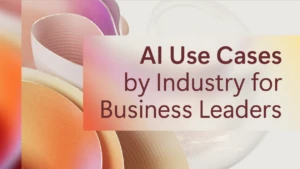Transforming the visitor experience in the world’s leading smart city
When it comes to smart cities, Barcelona is way ahead of the pack. For the last few years, it has gained recognition as one of the world’s leading smart cities. And earlier this year, the Spanish city was ranked the number 1 smart city in the world by Juniper’s Smart City Rankings.
At Bismart, we are excited to be based in this technology-savvy metropolis, and we’re doing our part to make it even smarter and more innovative. One of the ways we’re doing that is by combining big data and the Internet of Things (IoT), along with Microsoft technologies, to develop the best possible solutions for our city.
Creating intelligent routes by combining big data and the IoT
One of our newest solutions, Smart Destination, is a mobile, business intelligence (BI), big data, and machine learning app that captures, processes, and correlates data from sources such as IoT sensors throughout Barcelona, as well as real-time information from social media feeds. The resulting data insights are then used to create intelligent routes that help tourists plan the perfect itinerary in the city.
To create this powerful app, we partnered with Microsoft, the Barcelona City Council, and Sagrada Família—the church designed by Antoni Gaudi that is one of Barcelona’s most popular tourist attractions. The app analyzes the massive amounts of real-time data generated from Barcelona’s IoT sensors—placed on everything from city streets to subways. With insights from that data, the app helps both tourists and city residents plan their Barcelona itinerary based on their interests, budget, and available time.
Taking advantage of the power of the cloud
Smart Destination works so well because it relies on the power of the Microsoft Azure cloud platform to gather data from across Barcelona. Using a big data engine, the solution brings together both structured and unstructured data from hundreds of different sources, including sensors, internal systems, and open databases that provide traffic and weather feeds and social network data. The data is collected in the Azure cloud, where it is processed and made available to the app, which enriches the internal and external data to give tourists a powerful tool.
Giving visitors the ultimate Barcelona experience
When Barcelona visitors download the Smart Destination app on their smartphones, they can quickly find out the latest weather and traffic conditions, ticket prices, public transportation schedules, restaurant offers, and hotel occupancy information. The app even shows users if there are long lines to get into church and numerous other attractions. And Sagrada Família itself utilizes IoT sensors embedded inside the structure, alerting building managers, for example, about weight concerns if there are too many visitors in one of the towers.
Armed with this updated info, tourists have a better ability to find the best journey through Barcelona, tailored to their interests while providing the most current data. The app also gives visitors the opportunity to share their experience with others, by rating specific points of interest in the city and sharing those ratings—and comments—through social media.
Helping cities shape their offerings to tourists
Cities that use Smart Destination can provide a better, more customized experience for visitors. Thanks to big data and the IoT, we are gathering anonymous mobile phone data to track the popularity of certain sites in the city. Along with the social media feedback collected via the app, this helps city officials target visitors with specific places of interest. For example, city tourism officials can suggest popular points along Barcelona’s tourist-heavy streets, such as Las Ramblas and Passeig de Gracia.
You can learn much more about Smart Destination, and some of our other innovative solutions, at the Smart City Expo World Congress in Barcelona on November 17–19. I hope to see you there!
Learn More
Bismart’s Smart Destination




